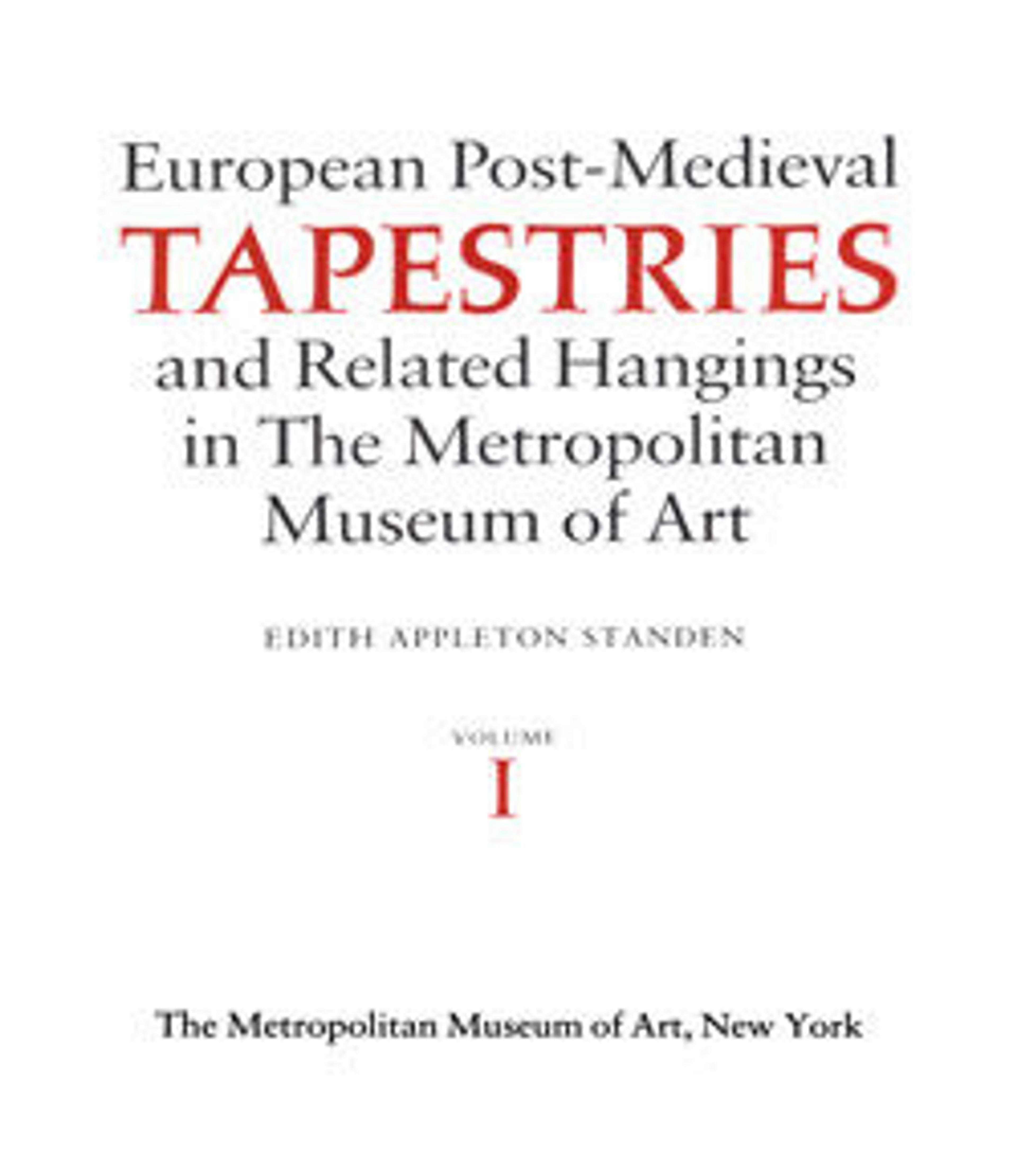The Last Supper, Saints John the Baptist and Andrew against a Faux Velvet Cloth of Gold
Entirely woven in one piece, using tapestry technique, at first glance, this appears to be a sixteenth-century tapestry-woven priestly vestment, similar to the well-documented examples associated with Gouda in The Met's collection (54.176.1 and .2). Like those, this seems to imitate the effect of more conventional velvet cloth of gold vestments ornamented with needlework orphreys (for example, The Met's 14.134.4a, .4b).
However, the weaving, though regular, is unusually flat and lifeless for sixteenth-century Netherlandish work. Oddities in design include the unnervingly gauche and bold faux velvet design, which is quite unlike other imitation velvet and damask tapestries (like 67.55.97). The palette of the figurative scenes is strangely pastel and quite different from sixteenth-century pictorial tapestries, and the saints in the "orphrey" shaft are unusually outlined in brown and black. Above all, the dimensions of this ostensible fragment of the reverse of a chasuble are uncommonly expansive; had this actually originally been part of a complete chasuble, it would have been of gigantic size, swamping any priest wearing it. As such, it becomes apparent that this is probably a nineteenth-century pastiche, either woven in creative emulation of early modern work, or made to trick the enthusiastic and spendthrift antique tapestry market.
However, the weaving, though regular, is unusually flat and lifeless for sixteenth-century Netherlandish work. Oddities in design include the unnervingly gauche and bold faux velvet design, which is quite unlike other imitation velvet and damask tapestries (like 67.55.97). The palette of the figurative scenes is strangely pastel and quite different from sixteenth-century pictorial tapestries, and the saints in the "orphrey" shaft are unusually outlined in brown and black. Above all, the dimensions of this ostensible fragment of the reverse of a chasuble are uncommonly expansive; had this actually originally been part of a complete chasuble, it would have been of gigantic size, swamping any priest wearing it. As such, it becomes apparent that this is probably a nineteenth-century pastiche, either woven in creative emulation of early modern work, or made to trick the enthusiastic and spendthrift antique tapestry market.
Artwork Details
- Title:The Last Supper, Saints John the Baptist and Andrew against a Faux Velvet Cloth of Gold
- Date:Possibly 19th century
- Culture:Belgian, possibly Brussels
- Medium:Wool, silk, silver and silver-gilt thread (19-20 warps per inch, 8-9 per cm.)
- Dimensions:L. 48 1/2 x W. 38 inches (123.2 x 96.5 cm)
- Classifications:Textiles-Tapestries, Textiles-Ecclesiastical
- Credit Line:Purchase, Joseph Pulitzer Bequest, 1936
- Object Number:36.46.1
- Curatorial Department: European Sculpture and Decorative Arts
More Artwork
Research Resources
The Met provides unparalleled resources for research and welcomes an international community of students and scholars. The Met's Open Access API is where creators and researchers can connect to the The Met collection. Open Access data and public domain images are available for unrestricted commercial and noncommercial use without permission or fee.
To request images under copyright and other restrictions, please use this Image Request form.
Feedback
We continue to research and examine historical and cultural context for objects in The Met collection. If you have comments or questions about this object record, please contact us using the form below. The Museum looks forward to receiving your comments.
